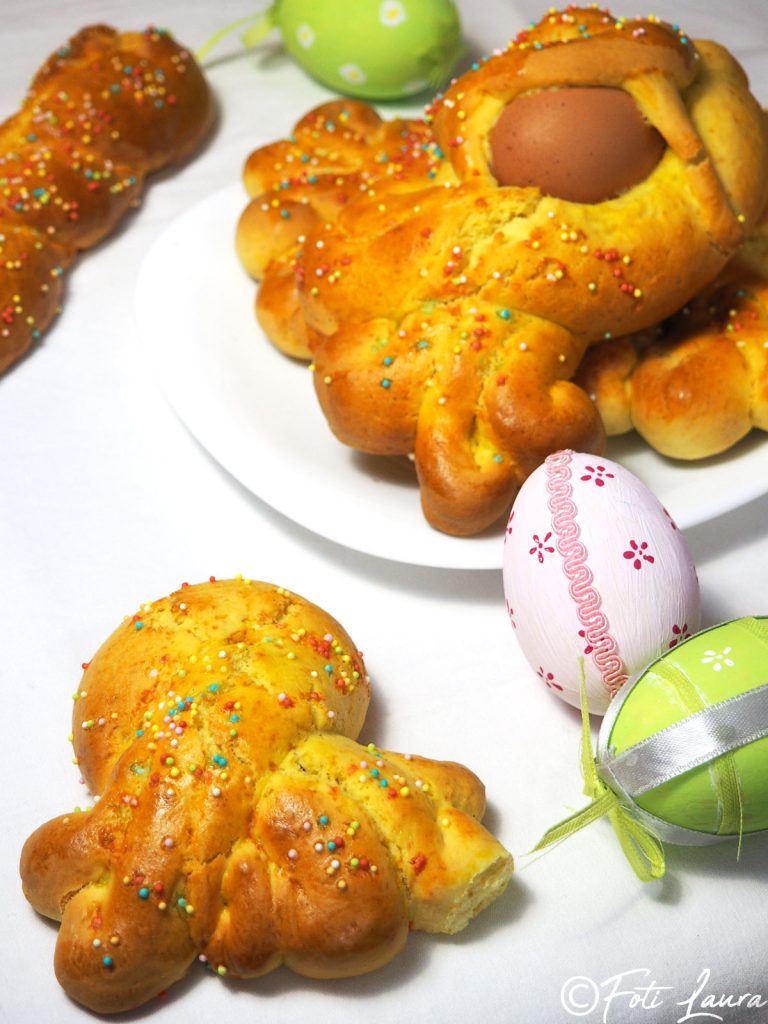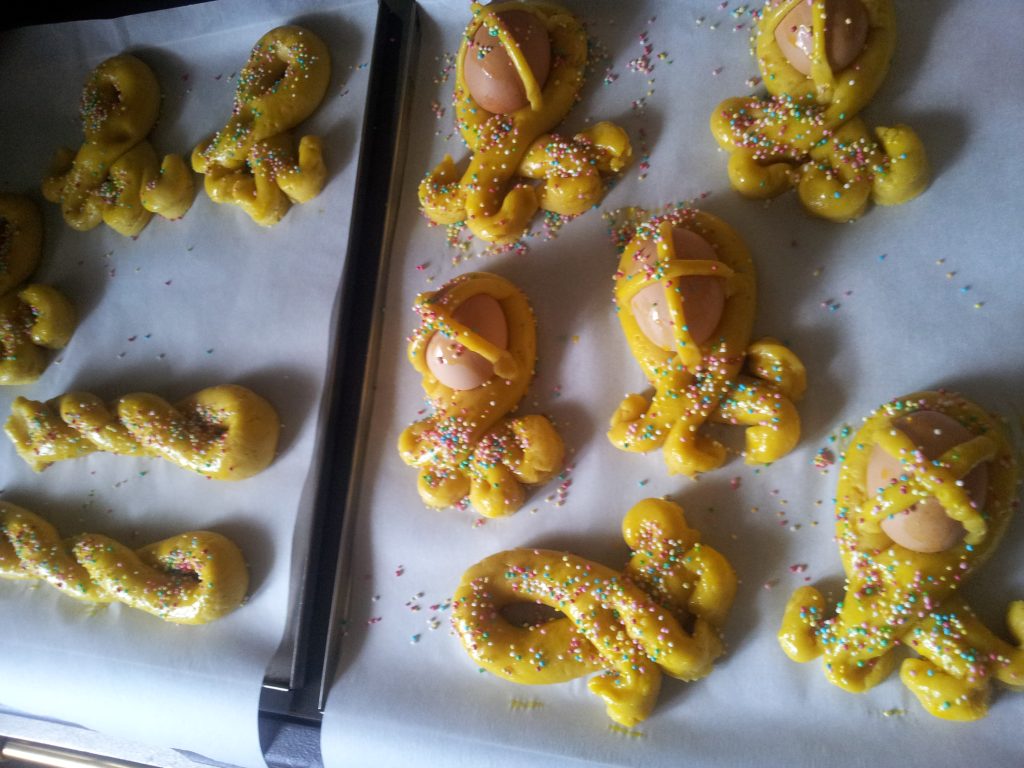The Calabrian cudduraci are typical sweets of the Reggio tradition, very similar to soft shortcrust pastry. They are shaped into different forms, brushed with egg, and decorated with hard-boiled eggs and colorful sprinkles. Although the recipe may vary according to the area of Calabria, the cudduraci are found everywhere, with variations also called nguti or cuzzupe.
These sweets are linked to very deep affectionate traditions: they were given by the “zita” (fiancée) to her man on Easter day. The larger and richer in eggs the cudduraci were, the greater the love one wanted to demonstrate. During the Easter Monday picnic (called “pascuni”), the cudduraci were never missing from the tables of the Reggio families.
I fondly remember when at my grandparents’ house the wood-fired oven was lit, and the aunts prepared these sweets. It was a moment of gathering and celebration among uncles and cousins. The particular shapes and bright colors of the cudduraci brought joy and filled the house with a special atmosphere, which I still relive every time I make these sweets.

- Difficulty: Easy
- Cost: Economical
- Portions: 2.2 lbs of cookies
- Cooking methods: Electric oven
- Cuisine: Italian
- Seasonality: Easter
Ingredients
- 2.2 lbs All-purpose flour
- 1.25 cups Sugar
- 1.1 cups Butter
- 2 packets Baking powder
- 2 packets Vanillin
- 1 pinch Salt
- 4 Whole eggs
- 1 Egg yolk
- 1 small glass Vermouth
- Grated lemon peel
- Milk (if necessary)
- A few hard-boiled eggs
- 1 Egg (for brushing)
- Colorful sprinkles
Preparation
Melt the butter in a double boiler and let it cool slightly. Meanwhile, in a large bowl, beat the eggs with the sugar until you obtain a light, frothy mixture. Add the melted butter and mix. Gradually incorporate the sifted flour, baking powder, vanillin, salt, Vermouth, and grated lemon peel.
When the mixture becomes too dense to work with a whisk, knead by hand until you obtain a homogeneous and firm dough. If necessary, add a few drops of milk. Wrap the dough in plastic wrap and let it rest in the refrigerator for about an hour.
Preheat the oven to 392°F and line the baking sheets (4 sheets) with parchment paper. Retrieve the dough and divide it into portions. Shape the cudduraci into traditional figures such as doves, hearts, baskets, or braids. If you wish, you can place a hard-boiled egg in the center of some shapes. Remember that the cookies will rise in the oven, so don’t make them too large.
Brush the surface with a beaten egg and decorate with colorful sprinkles.
Bake the cudduraci for about 25-30 minutes, until they are golden on the surface. Once ready, let them cool completely before enjoying.
The baking time may vary depending on the size of the cookies and the type of oven, but generally, it is about 25-30 minutes. The sweets should be golden on the surface.

Tips
Add flavors: If you like, you can enrich the dough with a few drops of vanilla essence or some grated lemon zest for a touch of freshness.
For a crunchy effect: You can add sugar crystals on top of the sweets before baking. This will give them an extra crunch.
Storage: Cudduraci keep well for several days in a tin box or airtight container, retaining their fresh taste and soft texture.
Notes
Hard-boiled eggs in the center: If you decide to place a hard-boiled egg in the center of each shape, make sure to cook it well beforehand and insert it gently into the dough to avoid breaking it.
Traditional shapes: Cudduraci can be made in many shapes, but the classic ones from the Calabrian tradition are the dove and the braid. Each shape has a symbolic meaning related to Easter.
FAQ – Calabrian Cudduraci
Can I replace butter with oil?
It is possible, but the final result may not be exactly the same. Butter gives a richer flavor and a crumblier texture. If you prefer a lighter sweet, you can use olive oil instead of butter.
Can I prepare the cudduraci in advance?
Certainly! You can prepare the dough in advance, store it in the refrigerator for a couple of days, and proceed with shaping and baking when you are ready.
The Calabrian cudduraci are much more than a sweet: they are a tradition rooted in Easter customs, a way to celebrate love and family. Perfect for sharing during the holidays, they are also an opportunity to create memories that will last over time. Making them will make you feel part of a deep connection with the land and traditions of Calabria. Try them, and let me know how they turned out!

